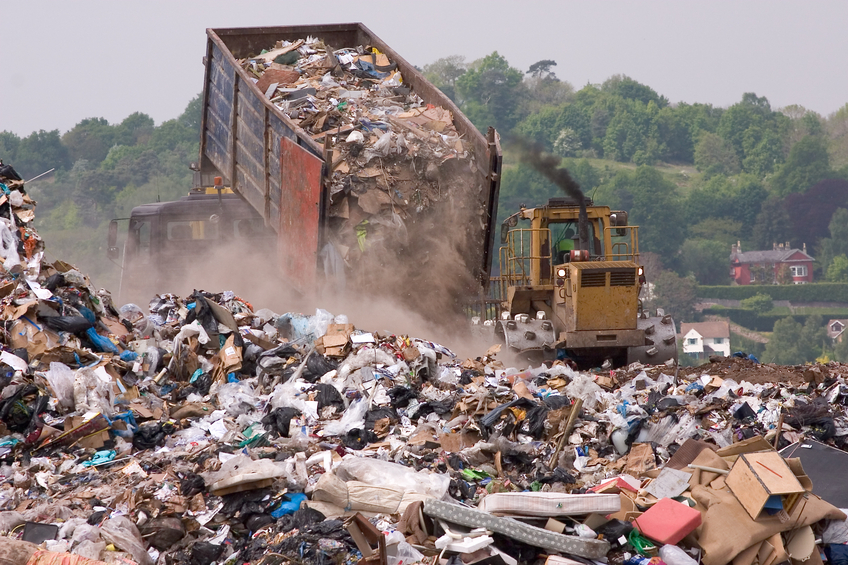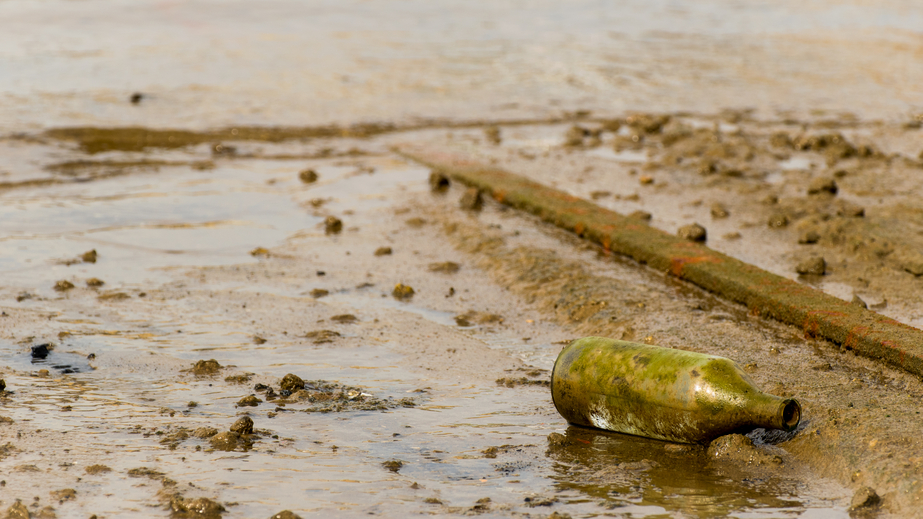New Jersey Environmental and Ethics 24 PDH Discount Package 3
An Introduction to Hazardous Waste Identification (C03-077)
Area Contingency Planning (C03-067)
Brownfields Road Map to Understanding Options for Site Investigation and Cleanup (C06-019)
Climate Smart Brownfields Manual (C05-028)
Environmental Quality and Border Security: A 10-Year Retrospective (C04-060)
General Principles of Engineering Ethics (LE2-016)

This online engineering PDH course presents the facts and statistics about the generation and disposition of municipal solid waste (MSW) over time in the United States. It examines the disposing of waste in landfills, recycling, composting, and combustion with energy recovery.
Approximately 262 million tons of MSW was generated in the United States in 2015. Understanding how waste is generated and disposed of is important for managing scarce materials.
This report analyzes MSW trends in generation and management, materials and products, and economic indicators affecting MSW. It also includes a section on the generation of construction and demolition (C&D) debris, which is not a part of MSW, but comprises a significant portion of the non-hazardous solid waste stream.
This 1 PDH online course is applicable to civil, environmental and sustainability engineers and other technical personnel who are interested in gaining a basic understanding of waste management on the individual and household level.
This PE continuing education course is intended to provide you with the following specific knowledge and skills:
- Knowing where MSW comes from and how it is disposed of
- Understanding how to manage materials in order to maximize economic efficiency
- Learning when recycling, composting, and combusting with energy recovery should be used
- Familiarizing with the Sustainable Materials Management (SMM) process
Upon successful completion of the quiz, print your Certificate of Completion instantly. (Note: if you are paying by check or money order, you will be able to print it after we receive your payment.) For your convenience, we will also email it to you. Please note that you can log in to your account at any time to access and print your Certificate of Completion.

This online engineering PDH course provides information on hazardous waste and presents the criteria and rules that can help identify if waste is hazardous or not.
"Is my waste a hazardous waste regulated under the Resource Conservation and Recovery Act (RCRA)?" This is one of the most common and basic RCRA questions and is the key to the RCRA hazardous waste program. If something is not hazardous waste, it is not regulated under RCRA. Proper identification of hazardous waste can be a difficult and confusing task, as the RCRA regulations establish a complex definition of the term "hazardous waste."
This 3 PDH online course is applicable to environmental and chemical engineers, as well as other technical professionals interested in identifying hazardous waste.
This PE continuing education course is intended to provide you with the following specific knowledge and skills:
- Learning about the hazardous waste identification process
- Familiarizing with the definition of hazardous waste
- Understanding the different listings and characteristics of hazardous waste
- Learning about the policies and regulations that surround hazardous waste
- Familiarizing with the developments to hazardous waste identification
Upon successful completion of the quiz, print your Certificate of Completion instantly. (Note: if you are paying by check or money order, you will be able to print it after we receive your payment.) For your convenience, we will also email it to you. Please note that you can log in to your account at any time to access and print your Certificate of Completion.

This online engineering PDH course provides information on the development of Area Contingency Plans (ACPs) for environmental emergencies, and explains the formation of area committees, essential plan elements and the establishment of the ACP scope and content.
An ACP is a reference document prepared for the use of all agencies engaged in responding to environmental emergencies in a defined geographic area. An ACP is not a rigid, prescriptive plan with step-by-step instructions for responses. Rather it serves as a mechanism to ensure responders have access to essential area-specific information, as well as to promote interagency coordination as a means of improving the effectiveness of responses.
Responding to the immediate circumstances of an environmental emergency can be a challenging task. Thus, the ACP provides a mechanism for planning for these potential complications prior to an incident. Moreover, it is a useful tool for responders, providing practical and accessible information about what they need to know for an effective response. Currently, the ACP concept has grown beyond oil spill legislations to encompass the prospect of responses to environmental emergencies in general, including hazardous substance releases, natural disasters and acts of terrorism.
This 3 PDH online course is applicable to environmental engineers who are interested in developing Area Contingency Plans (ACPs) for environmental emergencies.
This PE continuing education course is intended to provide you with the following specific knowledge and skills:
- Familiarizing with the concept of Area Contingency Planning
- Understanding the requirements and initial steps of conducting a preliminary analysis
- Learning about area committees, their activities and responsibilities
- Understanding the scope and content of the ACP
- Gaining a general overview of the advanced area planning using different platforms
- Exploring the essential plan elements
Upon successful completion of the quiz, print your Certificate of Completion instantly. (Note: if you are paying by check or money order, you will be able to print it after we receive your payment.) For your convenience, we will also email it to you. Please note that you can log in to your account at any time to access and print your Certificate of Completion.

This online engineering PDH course provides a general description of the steps in the investigation and cleanup of brownfields sites, and introduces Brownfields stakeholders to the range of technologies and resources available to them. The Road Map provides valuable information for stakeholders typically involved in or affected by redevelopment of Brownfields sites, whether through public projects, private development or public-private partnerships.
Brownfields sites are defined as “real property, the expansion, redevelopment or reuse of which may be complicated by the presence or potential presence of a hazardous substance, pollutant or contaminant” (Comprehensive Environmental Response, Compensation, and Liability Act of 1980, as amended by the Small Business Liability Relief and Brownfields Revitalization Act of 2002, §101(39)). The cleanup of Brownfields sites improves and protects the environment and may result in many benefits for the local community.
Revitalizing Brownfields sites has the potential to create benefits throughout the community, including community involvement in the project, job creation, and an increase in residential property values once a nearby Brownfields site is assessed or cleaned up.
This 6 PDH online course is intended for environmental, civil, and sustainability engineers as well as others seeking an outline on dealing with Brownfields in the United States and familiarizing with the EPA Brownfields Program.
This PE continuing education course is intended to provide you with the following specific knowledge and skills:
- Learning about the Brownfields road map
- Familiarizing with the factors and considerations that affect cleanup at a Brownfields site
- Learning about the Site Assessment phase
- Learning about the Site Investigation phase
- Familiarizing with the phase relating to assessment and selection of cleanup options as well as designing and implementing the cleanup
- Exploring various spotlights such as technologies, best practices, institutional controls
Upon successful completion of the quiz, print your Certificate of Completion instantly. (Note: if you are paying by check or money order, you will be able to print it after we receive your payment.) For your convenience, we will also email it to you. Please note that you can log in to your account at any time to access and print your Certificate of Completion.

This online engineering PDH course provides tools and strategies that can be implemented during the brownfield cleanup and redevelopment process. This includes consideration of projected climate change and potential impact on vulnerable populations when performing brownfield site assessments, evaluating cleanup alternatives, and planning for redevelopment.
Many members of vulnerable populations, including children, the elderly, low-income communities and tribal communities, live close to brownfields and other blighted properties. Brownfield redevelopment presents opportunities to reduce blight and improve the quality of life for vulnerable populations while mitigating the impacts of climate change.
To build resilience to climate change, members of the community (including local government, businesses, academic institutions, banks, community leaders, and residents) must pursue climate change adaptation as well as mitigation.
This 5 PDH online course is intended for environmental and sustainability engineers, as well as others interested in learning more about the tools, strategies, and considerations of brownfield cleanup and redevelopment.
This PE continuing education course is intended to provide you with the following specific knowledge and skills:
- Learning about the basic concepts of brownfield revitalization
- Understanding the importance of mitigation and adaptation for brownfield communities
- Understanding how to reduce climate impacts through greener demolition
- Learning about the importance of green remediation
- Familiarizing with brownfield redevelopment techniques
Upon successful completion of the quiz, print your Certificate of Completion instantly. (Note: if you are paying by check or money order, you will be able to print it after we receive your payment.) For your convenience, we will also email it to you. Please note that you can log in to your account at any time to access and print your Certificate of Completion.

This online engineering PDH course provides basic information on environmental quality and protection in the context of existing and proposed border security infrastructure and measures.
Border security is an important national priority, and environmental protection in the border region is of critical importance, given the rich natural resource endowments of the region. The shape and form of security infrastructure installed along the border is a critical factor affecting these areas of special concern. Additional installation of security infrastructure along the border will have a large impact on the region, presenting both challenges and opportunities to enhance security while preserving or even improving environmental sustainability.
There are mainly five key overlapping challenges in which environmental protection intersects with border security. These include, tourism and recreation economy; habitat integrity and wildlife corridors; water management; flooding, trash and sediment control; Hazmat and emergency response; and air quality.
This 4 PDH online course is applicable to environmental engineers who are interested in learning more about improving border security infrastructure while preserving environmental sustainability in the region.
This PE continuing education course is intended to provide you with the following specific knowledge and skills:
- Familiarizing with the overlapping challenges between border security and environmental protection
- Gaining a general overview on the demographic and economic context in the border region
- Understanding the environmental protection and border security context
- Learning about the challenges and opportunities presented in the region
- Understanding the emergency response management and agreements at the federal, state and local levels
- Exploring several case studies in different areas along the border region
Upon successful completion of the quiz, print your Certificate of Completion instantly. (Note: if you are paying by check or money order, you will be able to print it after we receive your payment.) For your convenience, we will also email it to you. Please note that you can log in to your account at any time to access and print your Certificate of Completion.

This online engineering PDH course presents the principles of engineering ethics that every engineer is expected to live by when practicing their profession.
Engineering ethics is (1) the study of moral issues and decisions confronting individuals and organizations involved in engineering and (2) the study of related questions about moral conduct, character, ideals and relationships of peoples and organizations involved in technological development (Martin and Schinzinger, Ethics in Engineering).
This course describes the fundamental legal concepts with which very engineer should be familiar. It also presents unique disciplinary case studies selected from across the nation, as well as hypothetical ethical challenges that demonstrate how difficult it can be to apply the code of ethics for engineers.
This 2 PDH online course is applicable to all professional engineers who are either required to fulfill 2 PDH in engineering ethics or are interested in broadening their understanding of what it means to practice and uphold the honor and integrity of their engineering profession while holding the utmost safety, health, and welfare of the public.
This PE continuing education course is intended to provide you with the following specific knowledge and skills:
- Understanding the common definition of ethics regarding engineering
- Learning about the important principles of the engineer’s professional responsibility
- Learning the do’s and don’ts through several ethical and disciplinary cases
- Understanding what it means to practise and uphold the honor and integrity of the engineering profession
Upon successful completion of the quiz, print your Certificate of Completion instantly. (Note: if you are paying by check or money order, you will be able to print it after we receive your payment.) For your convenience, we will also email it to you. Please note that you can log in to your account at any time to access and print your Certificate of Completion.